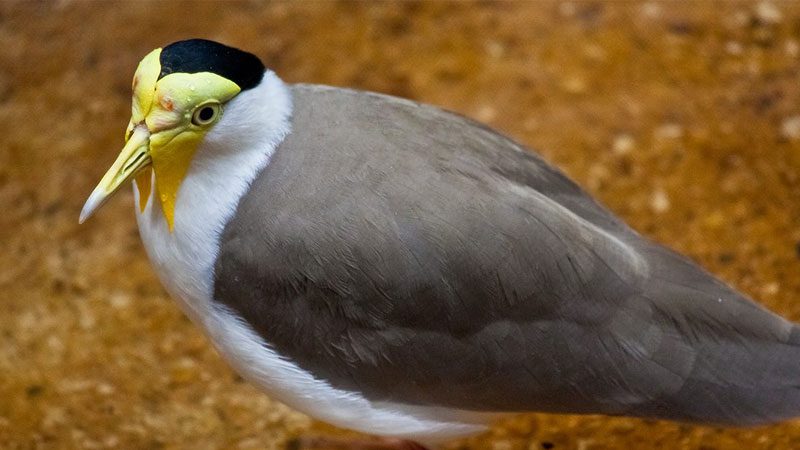Welcome to Lincoln Park Zoo’s new web app! Share your feedback

Masked Lapwing
McCormick Bird House
Did You Know?
- Some masked lapwings have a thorny black and yellow spur on the front of their wings, which can be used to scare off predators.
- These birds have adapted well to living on the edges of urban areas near humans. Sometimes, they build nests in school playing fields or on rooftops.
- To lure predators away from nests, these birds may dive at intruders or pretend to have a broken wing.
Don’t See the Animals?
Why aren’t animals visible at all times? To promote positive animal welfare, we provide animals with choices. They can choose to spend time in areas that are out of public view.

Take an Animal Home with You
Overview
Scientific Name: Vanellus miles miles
Class: Birds
Diet: Insects (also plant matter)
Range: Northern Australia, New Guinea, and smaller islands in Indonesia
Endangered Status: Least Concern
More Information
Masked lapwings are stocky wading birds that have a bright yellow bill and face, a black crown, a white throat and chest, and gray wings. Their long legs are reddish-brown. These birds inhabit a variety of habitats, including wetlands and deserts.
Masked lapwings pair off during breeding season and form small flocks the rest of the year. Pairs can be territorial when they are nesting. Nests are built in short grass often near water, made up of a depression in the ground lined with debris and pebbles. Females lay three to four eggs per clutch, which incubate for around a month. Their offspring can swim from a very early age and mature between 1-3 years of age.
